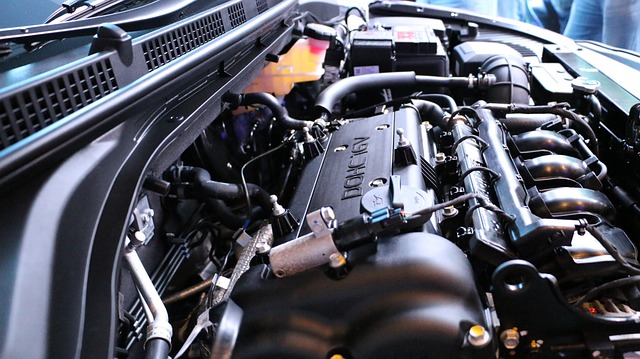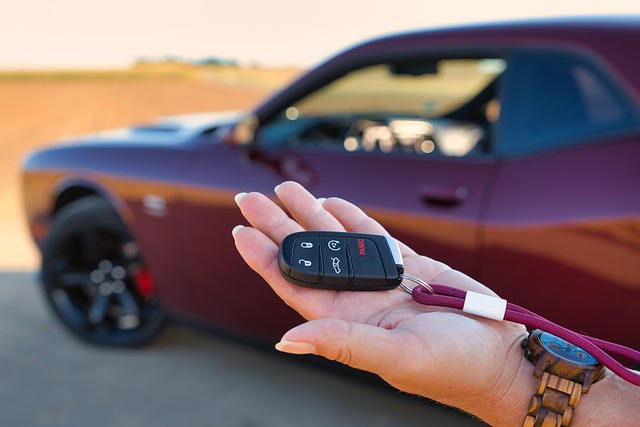Looking to register your car in California? This comprehensive guide walks you through the entire process, from understanding the requirements to securing your registration. We cover key steps like gathering essential documents for VIN verification, undergoing a vehicle inspection, submitting applications and fees, and finally, obtaining your CA registration plate. By following these straightforward steps, you’ll be cruising smoothly on California’s roads in no time.
- Understanding the California Car Registration Process
- Gathering Necessary Documents for VIN Verification
- Conducting a Vehicle Inspection in CA
- Submitting Your Application and Fees
- Obtaining Your California Registration Plate and Documentation
Understanding the California Car Registration Process

Understanding the California Car Registration Process
Registering a car in California involves several key steps to ensure compliance with state regulations. It begins with verifying the vehicle’s unique identifier, known as the Vehicle Identification Number (VIN), which serves as a digital fingerprint for each car. This process, called VIN verification, is crucial to establishing ownership and history. In California, this verification can be conducted through various channels, including a mobile VIN inspection by a designated verifier.
By utilizing a mobile VIN verifier, you simplify the initial registration process. These services enable convenient and efficient checks, ensuring that your vehicle meets all necessary standards before completing the registration formalities. This modern approach aligns with California’s commitment to streamlined procedures for car ownership while maintaining stringent safety and legal requirements through comprehensive VIN inspections.
Gathering Necessary Documents for VIN Verification

Before heading to the California Department of Motor Vehicles (DMV) to register your car, ensure you have all the necessary documents for a smooth vin verification process. The Vehicle Identification Number (VIN) is a unique code that identifies your vehicle, and accurate vin verification is crucial during registration. Gather the following: your vehicle’s title, proof of insurance, and a valid driver’s license or state-issued ID.
Additionally, you may need to provide documentation related to the previous owner, such as a bill of sale or a completed Transfer of Ownership form. For convenience, many individuals opt for mobile vin verification services that enable a swift inspection of your vehicle’s VIN right from your location. These mobile vin verifiers can save time by eliminating the need for an in-person visit to the DMV and often provide same-day registration services.
Conducting a Vehicle Inspection in CA

In California, conducting a vehicle inspection is a crucial step before registering your car. The state requires a thorough check to ensure all vehicles on the road meet safety and environmental standards. One essential component of this process is the Vehicle Identification Number (VIN) verification, which helps in authenticating the vehicle’s history and identifying any potential issues. This can be done through various methods, including a traditional inspection at a designated center or utilizing mobile VIN verification services.
For convenience, many Californians opt for mobile VIN inspection options, where a professional comes to your location to perform the check. This service is provided by specialized companies offering mobile VIN verifiers, ensuring a seamless and efficient process. With their expertise, you can have peace of mind knowing that your vehicle’s inspection is accurate and up-to-date, streamlining the registration process accordingly.
Submitting Your Application and Fees

After completing your application for vehicle registration, the next step is submitting it along with the required fees to the California Department of Motor Vehicles (DMV). This can typically be done at a local DMV field office or, for added convenience, through a mobile vin inspection service.
If you opt for traditional submission, ensure all documents are in order, including your vehicle’s title, proof of insurance, and valid identification. Alternatively, enlisting the help of a mobile vin verifier facilitates the process by allowing them to conduct a vin inspection on-site. This not only saves time but also ensures accuracy during the VIN verification stage, which is crucial for registering your car in California.
Obtaining Your California Registration Plate and Documentation

After confirming your car’s eligibility for registration, it’s time to secure your California registration plate and necessary documentation. The process begins with a crucial step known as VIN verification, where you’ll need to establish the authenticity of your vehicle’s unique identifier—the Vehicle Identification Number (VIN). This can be done through a mobile VIN inspection or by visiting a designated service center for formal verification. Once your VIN is confirmed, you’re ready to obtain your registration plate.
In California, you’ll typically apply for a license plate through the Department of Motor Vehicles (DMV). You might opt for a standard plate or choose from specialized options based on your vehicle’s make and model. Alongside your registration plate, ensure you gather all relevant documents, including proof of insurance, owner’s affidavit, and any required forms for your specific situation, such as emissions testing certificates if applicable.
Registering a car in California involves several steps, from understanding the process and gathering documents for VIN verification to conducting inspections and submitting applications. By following these straightforward procedures, you’ll be driving legally and smoothly on California’s roads in no time. Remember to keep your registration up-to-date to avoid any penalties and ensure a seamless experience throughout the process.
